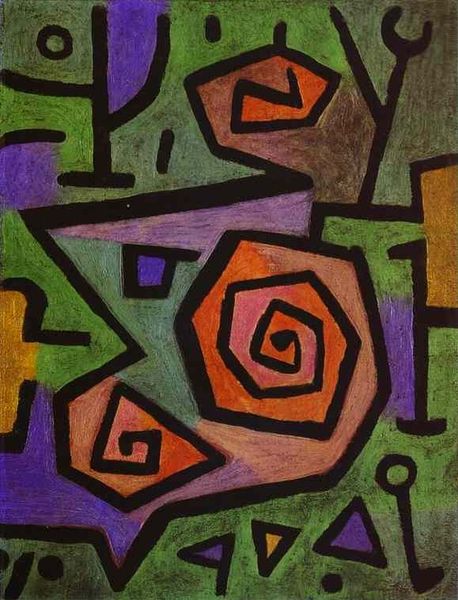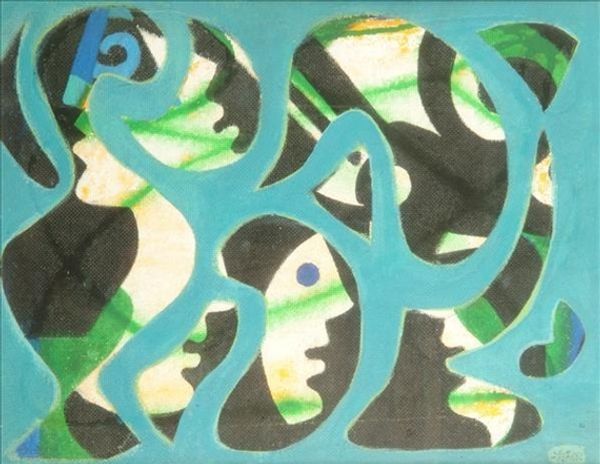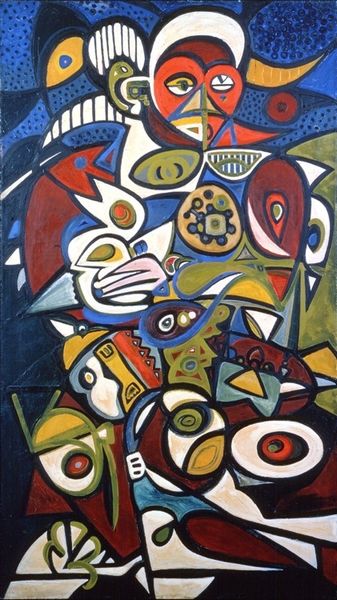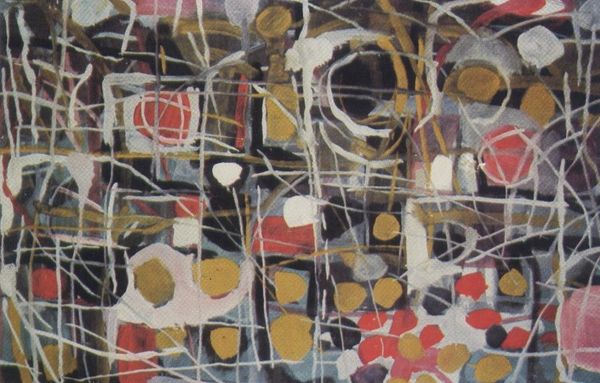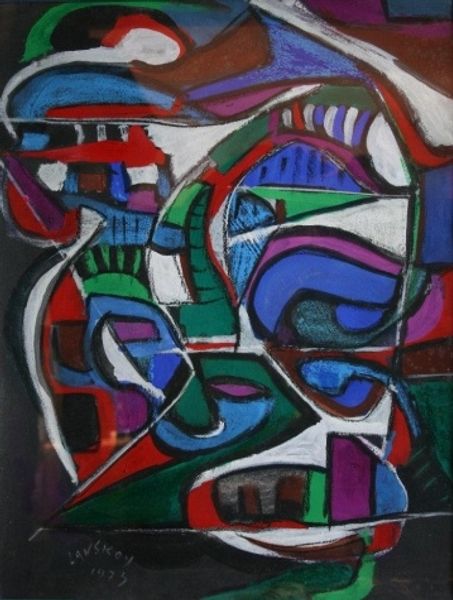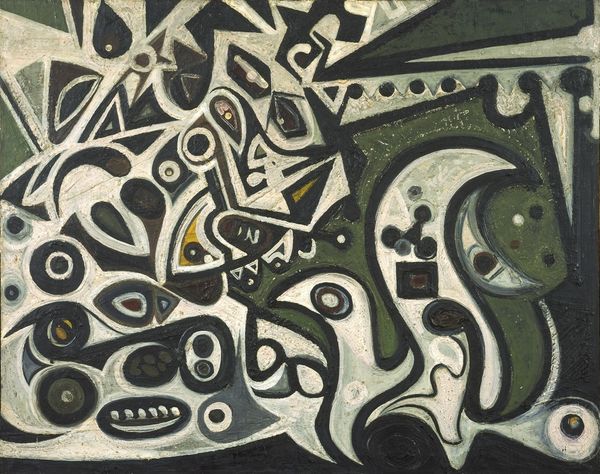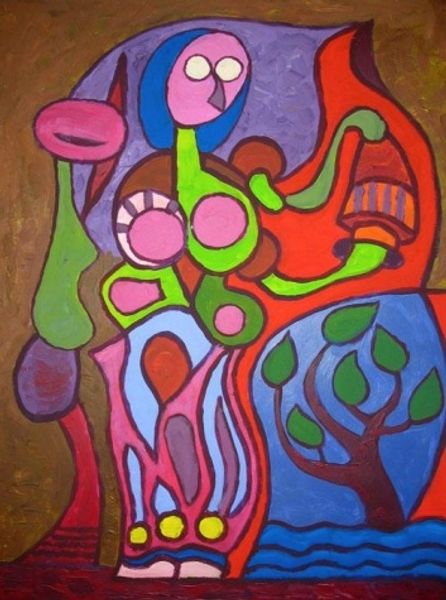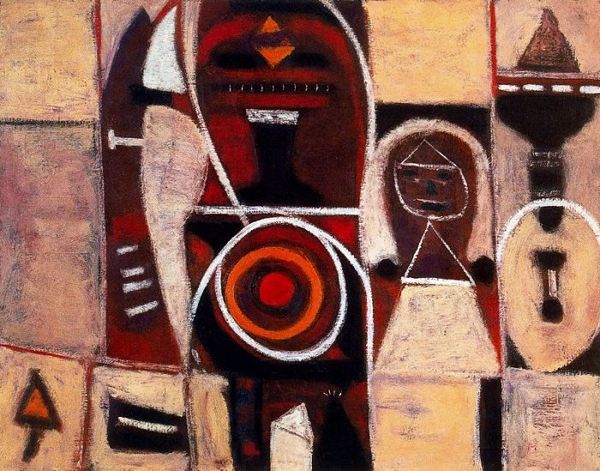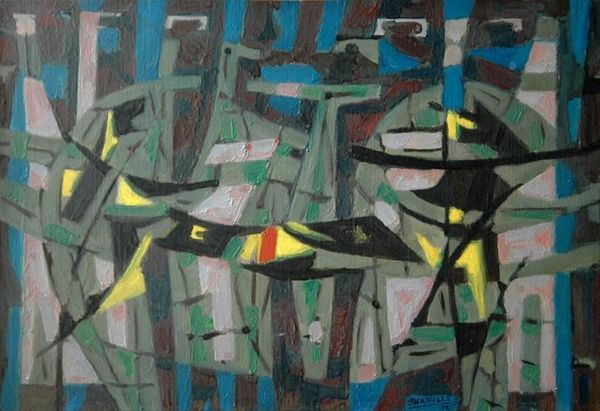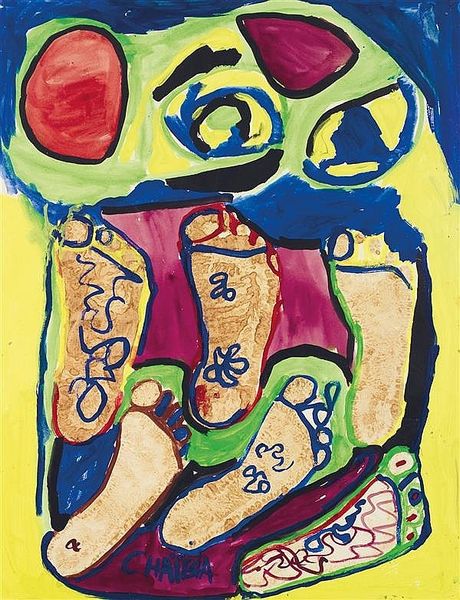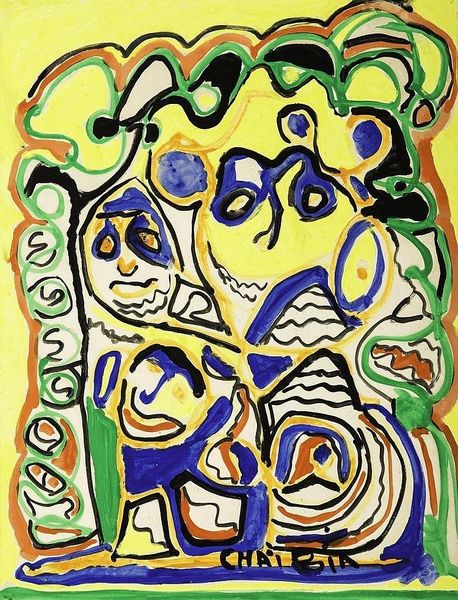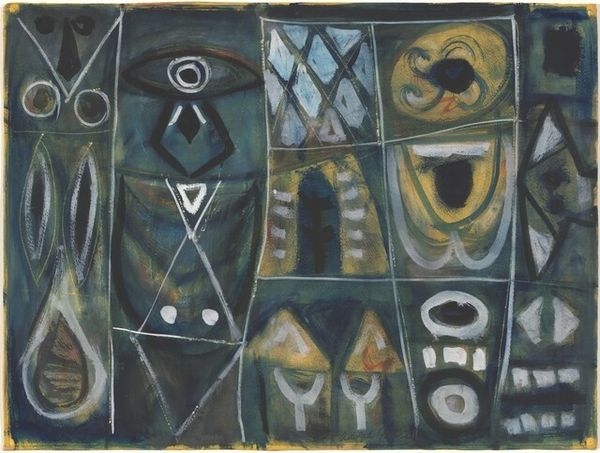
Copyright: Richard Pousette-Dart,Fair Use
Editor: Here we have Richard Pousette-Dart's "Animal Head," painted in 1938 using oil paint. It's an intriguing composition. The contrasting black, white, and green shapes definitely create a captivating, almost unsettling mood. What do you see in this piece? Curator: It’s interesting you mention the unsettling mood, as I find a sense of primeval symbolism here. The "animal head," abstracted as it is, becomes a vessel for deep-seated cultural memories of animal totems and spirit guides. Think about cave paintings, fertility figures—the symbolic weight of animals throughout human history. Do you see echoes of that here? Editor: I can see that now. The simplified shapes do evoke a more ancient, almost universal feel, like a symbol plucked from a much older context. What is the significance of his choice to call it animal "head"? Curator: By focusing on the 'head,' Pousette-Dart directs our attention to intellect, consciousness, and primal instinct. The circular forms might represent eyes or a kind of cognitive awareness, set against the darker, perhaps unconscious, background. What sort of animal do you think of? Editor: It almost looks bird-like in its structure with that head. It's really fascinating to see how these basic shapes and colors trigger so many associations. Curator: Exactly! And this is where the power of symbolism resides—its capacity to unlock deeply embedded associations within our collective consciousness, whether bird, spirit or something else! Editor: This piece definitely makes me think about how symbols work across time. It is really amazing to look at what connects our memory of ancient culture through symbols, so interesting!
Comments
No comments
Be the first to comment and join the conversation on the ultimate creative platform.
